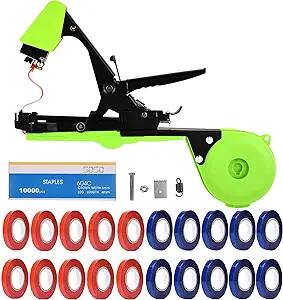Comprehending the Different Types of Gardening and Just How They Add to a Much Healthier Way Of Life and Environment

Advantages of Veggie Gardening
Several people are increasingly acknowledging the myriad advantages of veggie horticulture as a crucial component of a healthier lifestyle. Taking part in veggie horticulture offers numerous physical health advantages, including raised physical task, which boosts cardio wellness and advertises total health and fitness. The act of growing, weeding, and harvesting calls for activity and can aid battle sedentary actions, adding to weight management and improved muscle mass tone.
Additionally, growing one's very own veggies substantially enhances dietary top quality. Homegrown produce is often fresher and a lot more nutrient-dense compared to store-bought alternatives, as it can be consumed shortly after harvest. This accessibility encourages a better consumption of vegetables and fruits, which are vital for avoiding chronic conditions.
Furthermore, veggie gardening cultivates mental wellness by providing a restorative outlet for anxiety alleviation and relaxation. Jointly, these advantages emphasize the value of vegetable horticulture as a keystone of a much healthier lifestyle.
Exploring Blossom Horticulture

Along with aesthetic benefits, flower horticulture sustains local ecological communities. Many flowering plants draw in pollinators, such as and butterflies, which are critical for maintaining biodiversity. The presence of varied flora can likewise improve dirt wellness, as numerous plants add to nutrient cycling and improve dirt structure.
Additionally, blossoms can play a significant role in promoting sustainable practices. Numerous gardeners choose indigenous or drought-resistant types, which call for much less water and marginal chemical inputs. This strategy not just profits the setting yet additionally urges liable horticulture behaviors.
Inevitably, blossom horticulture acts as a crucial element of an all natural horticulture technique. Gardening. By cultivating beauty and supporting neighborhood communities, it balances with vegetable gardening and underscores the importance of supporting both our physical and psychological well-being through nature
Container Gardening Benefits
Container gardening deals many advantages that make it an appealing option for both amateur and seasoned garden enthusiasts. One of the primary advantages is its adaptability; containers can be positioned on patio areas, verandas, or even indoors, enabling horticulture precede with restricted ground access. This flexibility makes it possible for people in urban environments or those with tiny lawns to grow plants successfully.
Furthermore, container gardening provides boosted control over dirt quality and moisture degrees. Gardeners can select particular dirt blends to enhance plant health and alleviate concerns like weeds and bugs. The flexibility of containers likewise allows for very easy moving to take full advantage of sunshine exposure or protect plants from stormy weather condition.
Furthermore, container yards can be aesthetically pleasing, supplying a chance for imagination in design. Gardening. They can offer as ornamental elements that improve outdoor or interior spaces while advertising biodiversity by drawing in pollinators
Last but not least, container horticulture can contribute to a healthier way of life by encouraging physical activity, as it usually includes lifting, growing, and preserving plants. On the whole, the advantages of container gardening make it an available and rewarding method for those seeking to boost their way of life and setting.
The Rise of Vertical Horticulture
As city spaces end up being significantly crowded, the pattern of vertical horticulture has actually taken off, enabling people to optimize their horticulture potential in limited areas. This innovative technique involves growing plants in vertical structures, such as wall-mounted planters, trellises, or specialized vertical garden systems. The charm of vertical gardening lies not just in its reliable use space but also in its aesthetic contribution to urban environments, transforming bare walls into lush eco-friendly landscapes.
Vertical gardens can be set up in homes, verandas, and area rooms, giving a platform for growing a variety of plants, including herbs, veggies, and ornamental flowers. This technique urges biodiversity and can boost air top quality by filtering system pollutants while advertising a link Your Domain Name to nature in largely populated locations. In addition, upright gardening provides useful benefits, such as enhanced yield per square foot, making it an eye-catching choice for metropolitan gardeners seeking to expand their very own food.

Sustainable Practices in Gardening
Welcoming lasting practices in gardening is vital for advertising ecological health and making sure the viability of our natural deposits. Sustainable horticulture strategies concentrate on decreasing ecological impact, preserving water, and fostering biodiversity. By executing methods such as natural gardening, garden enthusiasts can minimize making use of artificial plant foods and chemicals, which can damage neighborhood communities.
Buddy growing is an additional reliable lasting method, where specific plants are grown with each other to enhance development and hinder bugs normally. In addition, using native plants in landscaping sustains neighborhood wild animals and needs less upkeep, as they are inherently adapted to the neighborhood environment and soil conditions.
Water conservation strategies, such as rain harvesting and drip irrigation, help to successfully handle water resources, thus reducing waste. Moreover, composting natural waste not just enhances the soil yet additionally lowers garbage dump contributions, promoting a round economic situation.
Last but not least, exercising plant turning and cover chopping boosts dirt health and reduces the risk of parasite invasions. By integrating these lasting methods, gardeners can create durable ecological communities that add to a much healthier way of living while safeguarding the setting for future generations.
Final Thought

In conclusion, the diverse approaches of gardening, consisting of veggie, flower, container, and vertical horticulture, jointly promote a healthier way of living and improve ecological sustainability. Each special info type uses distinct benefits, from giving fresh produce and drawing in pollinators to optimizing limited areas and encouraging biodiversity. By promoting lasting techniques, these gardening approaches not only add to private health but also support wider environmental preservation initiatives, inevitably reducing reliance on commercial agriculture and improving neighborhood durability.
Comments on “The Most Effective Gardening Plants for Low-Maintenance and High Award”